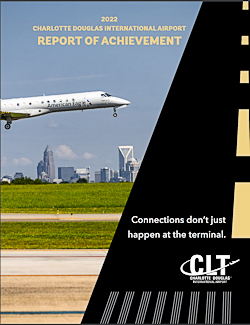1 + 1 = 3
At the recent ACC/AAAE Airport Planning, Design & Construction Symposium in Denver, I heard a few people whining about the stimulus package recently signed into law. The comments were that we "only got $1 billion." Unbelievable. This is a tremendous building block. No, on its own, the American Recovery and Reinvestment Act will not solve all of our aviation woes. But there's a lot more in play here than a "measly" $1 billion with which to chart our future.
Former FAA associate administrator for Airports Woodie Woodward told me that we'll have an unprecedented arsenal of financial resources at our disposal when we combine the stimulus package's money with new AIP dollars and soon-to-be PFC increases.
Ms. Woodward, now a consultant, said that the rate of growth of annual AIP funds has risen remarkably over the last decade, more than virtually any other government spending program. AIP money, plus an additional 35% from stimulus dollars, is more money than any of us would have imagined possible six months ago. There's more from this stimulus bill:
• $1 billion for security and baggage needs
• Exemption for AMT taxes on airport bonds
• 100% fully fundable - no worrying about matching grants
|
Paul Bowers |
While these legislative changes are good news, we need to act quickly. There is a time limit on the stimulus money. The drop off in passenger traffic is also temporary (see Industry Insider on page 46 in this issue) and we'll soon be looking at new capacity issues. You may think it would be easy to spend all of the money, but consider in the last fiscal year there was an AIP carryover of $680 million dollars. FAA's Ben DeLeon says that airport operators need to do their part and "take the risk with planning" to be ready. I'd add that consultants and suppliers need to do the same.
Thanks again for all of your support.
Cheers! Paul
2022 Charlotte Douglas International Airport Report of Achievement
 Giving back to the community is central to what Charlotte Douglas International Airport and its operator, the City of Charlotte Aviation Department, is about, and last year was no different.
Giving back to the community is central to what Charlotte Douglas International Airport and its operator, the City of Charlotte Aviation Department, is about, and last year was no different.
Throughout 2022, while recovering from the COVID-19 pandemic, we continued our efforts to have a positive impact on the Charlotte community. Of particular note, we spent the year sharing stories of how Connections Don't Just Happen at the Terminal - from creating homeownership and employment opportunities to supporting economic growth through small-business development and offering outreach programs to help residents understand the Airport better.
This whitepaper highlights the construction projects, initiatives, programs and events that validate Charlotte Douglas as a premier airport.
Download the whitepaper: 2022 Charlotte Douglas International Airport Report of Achievement.









